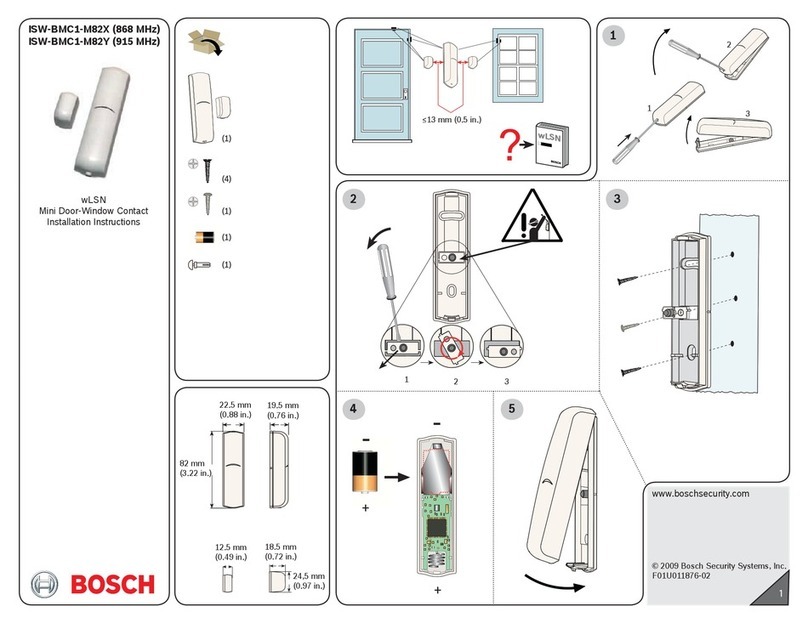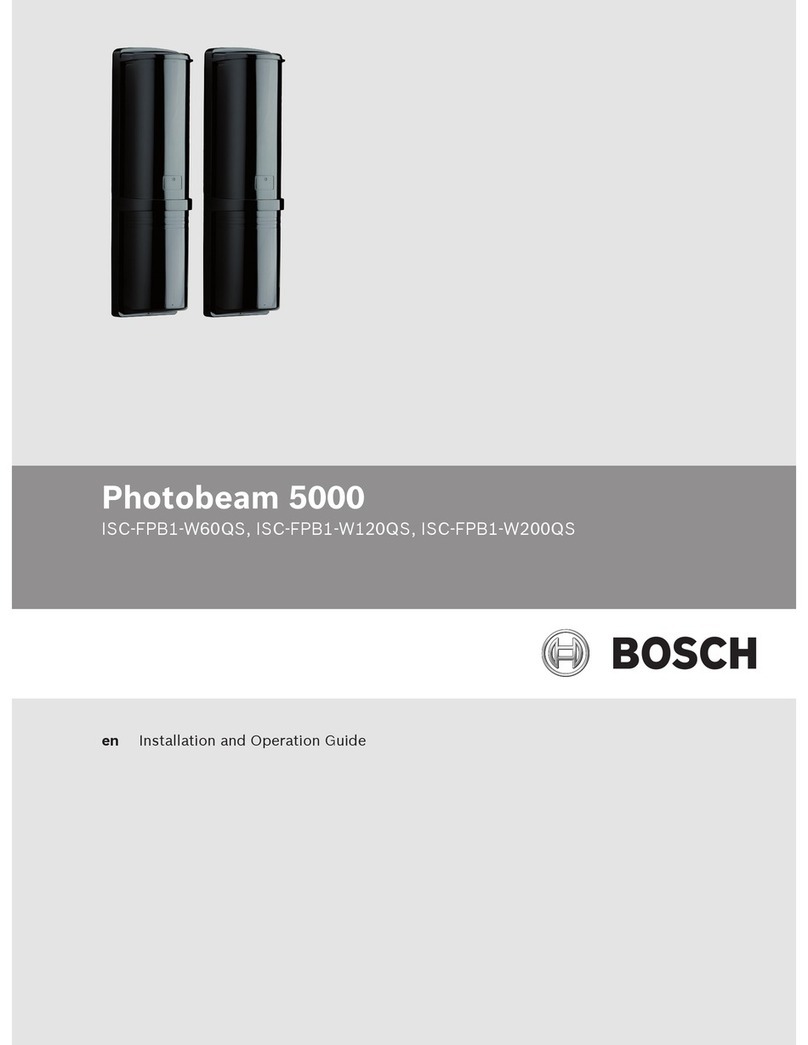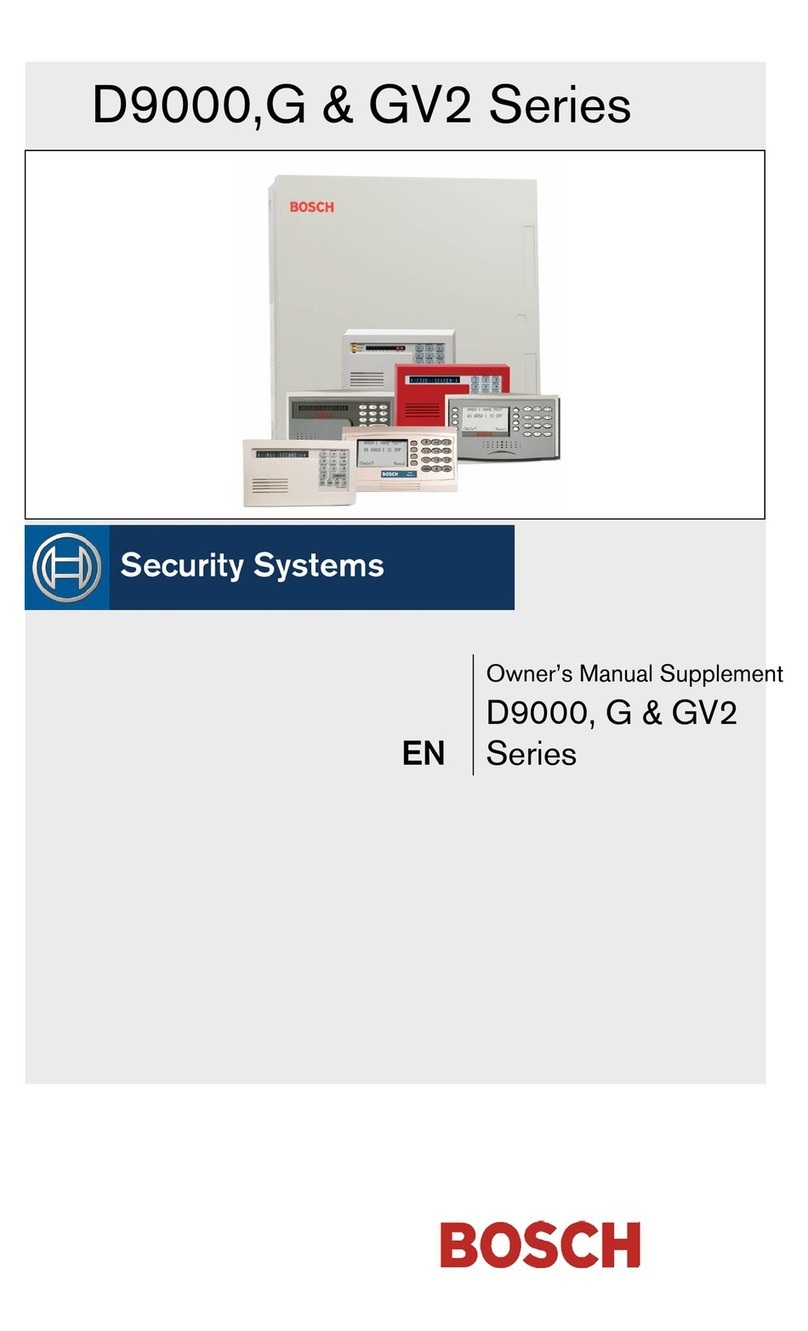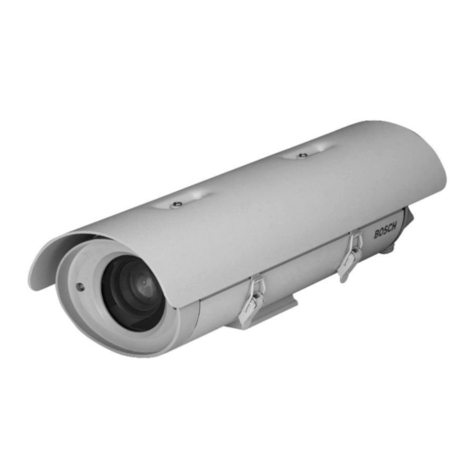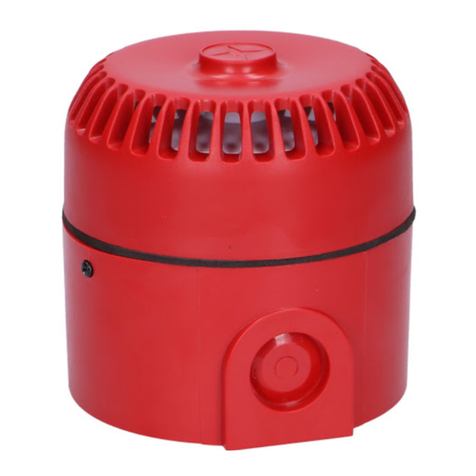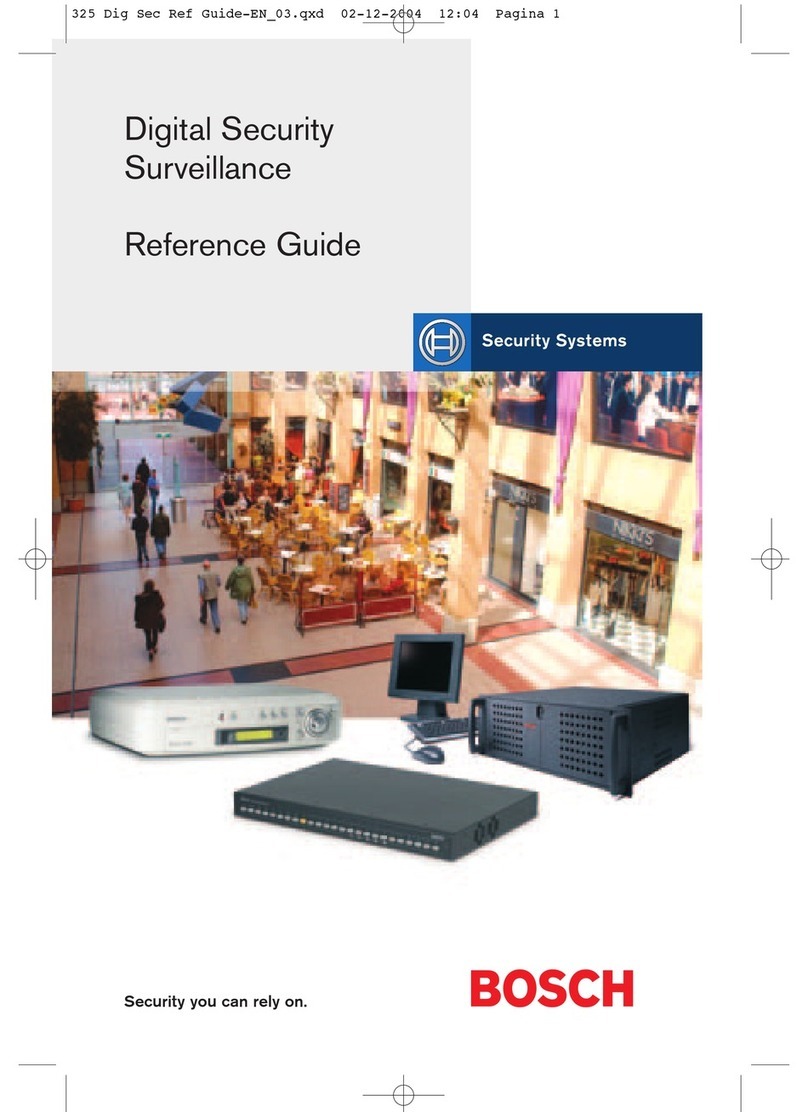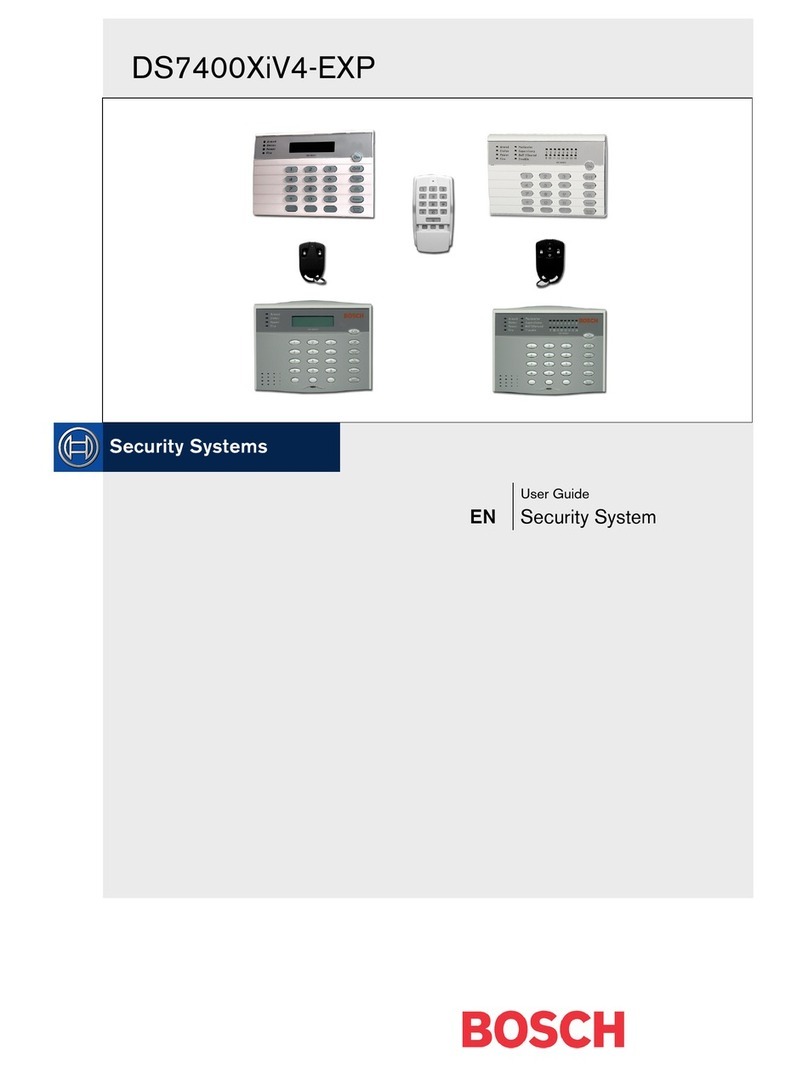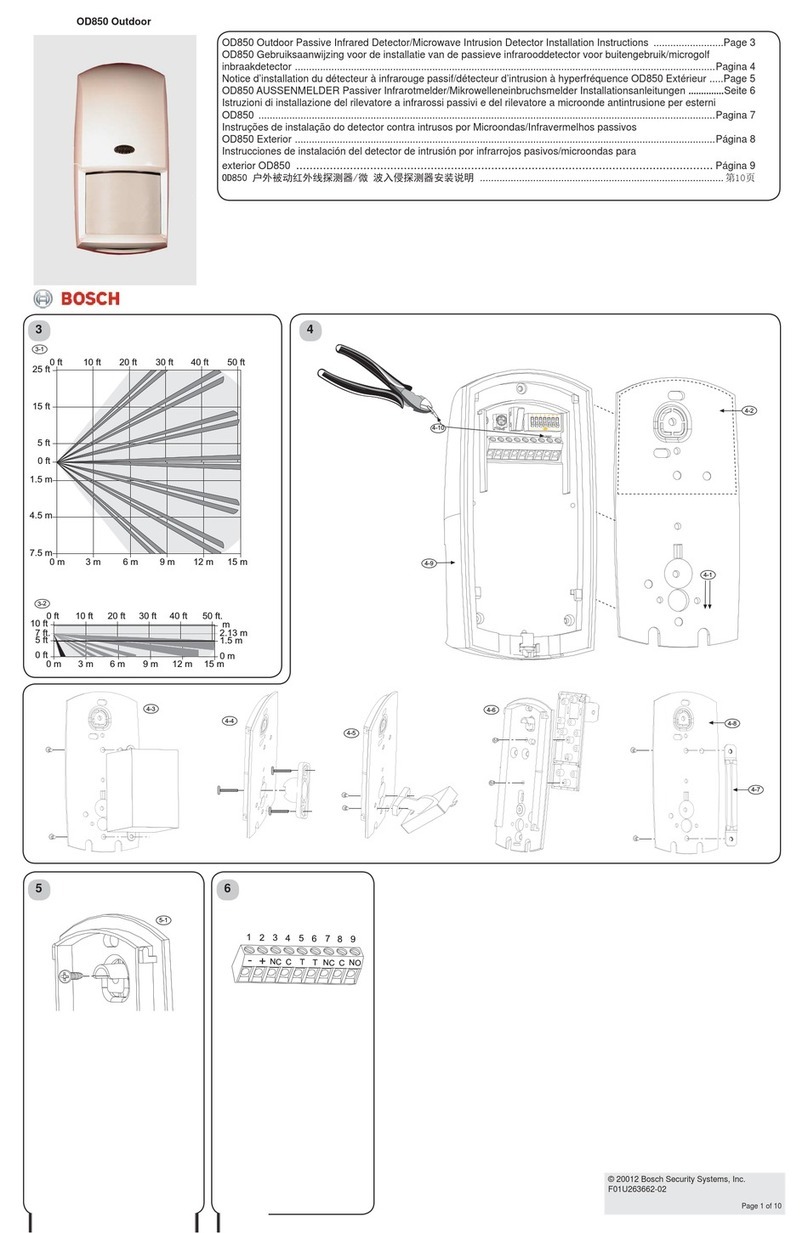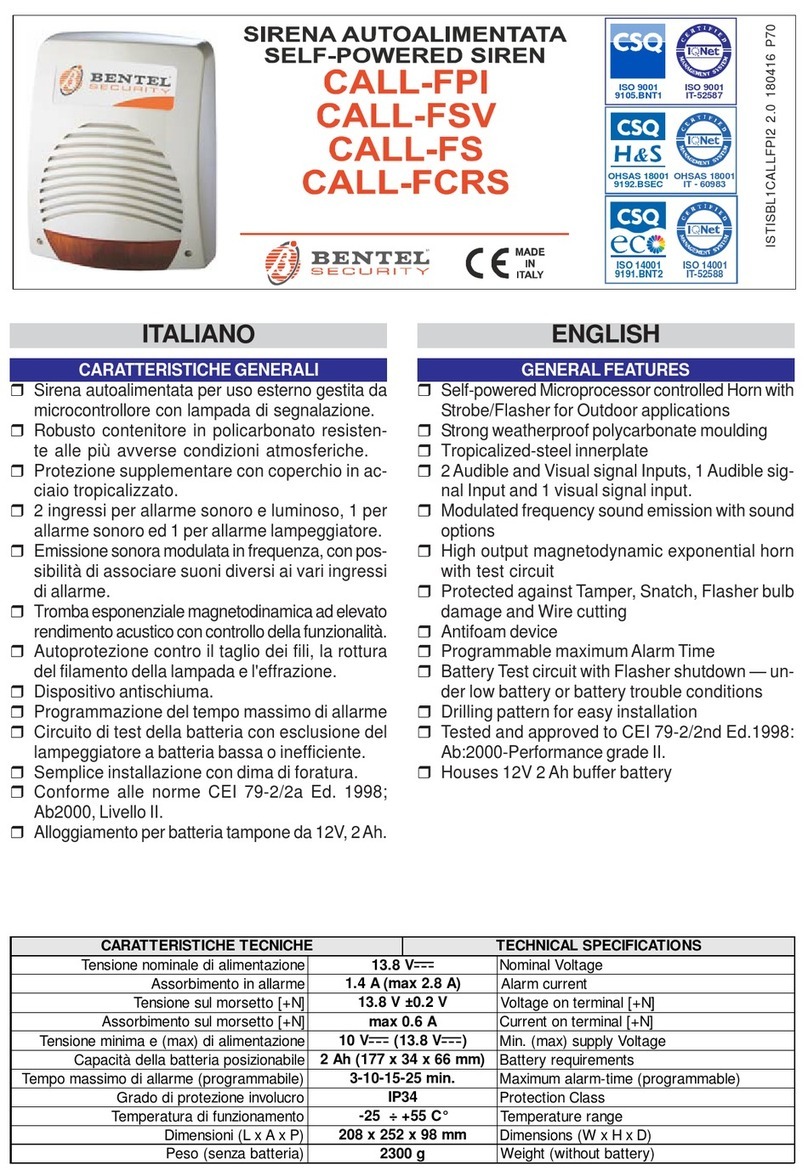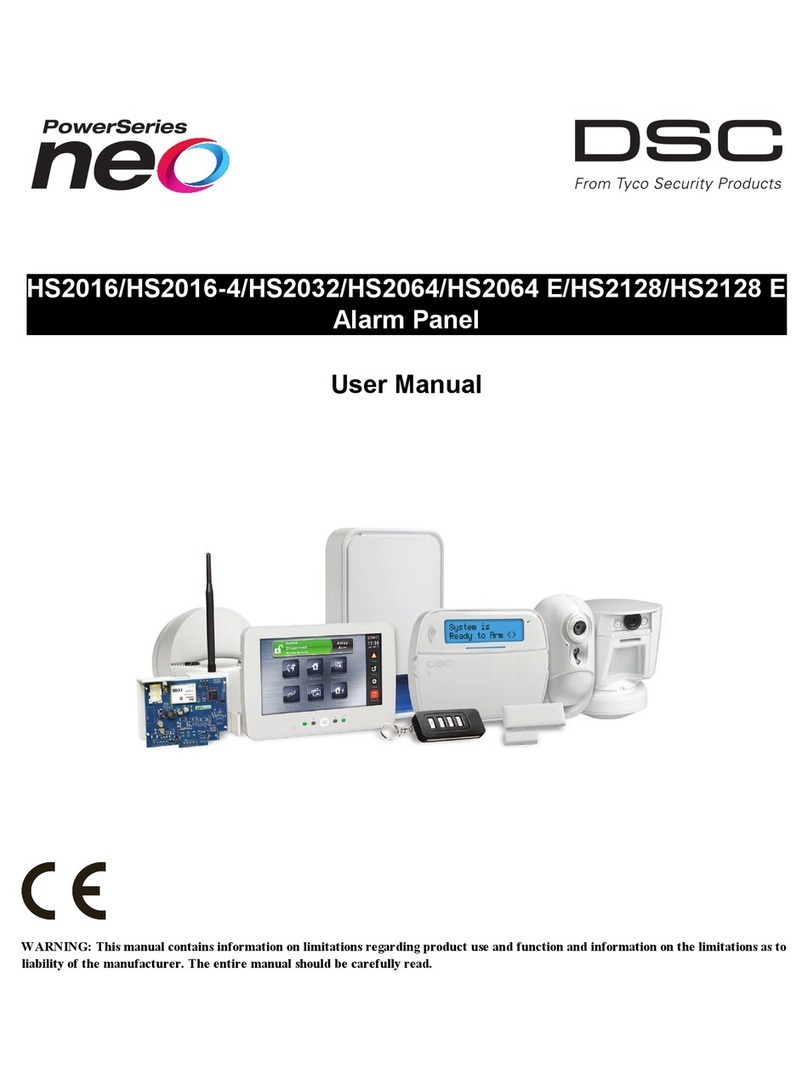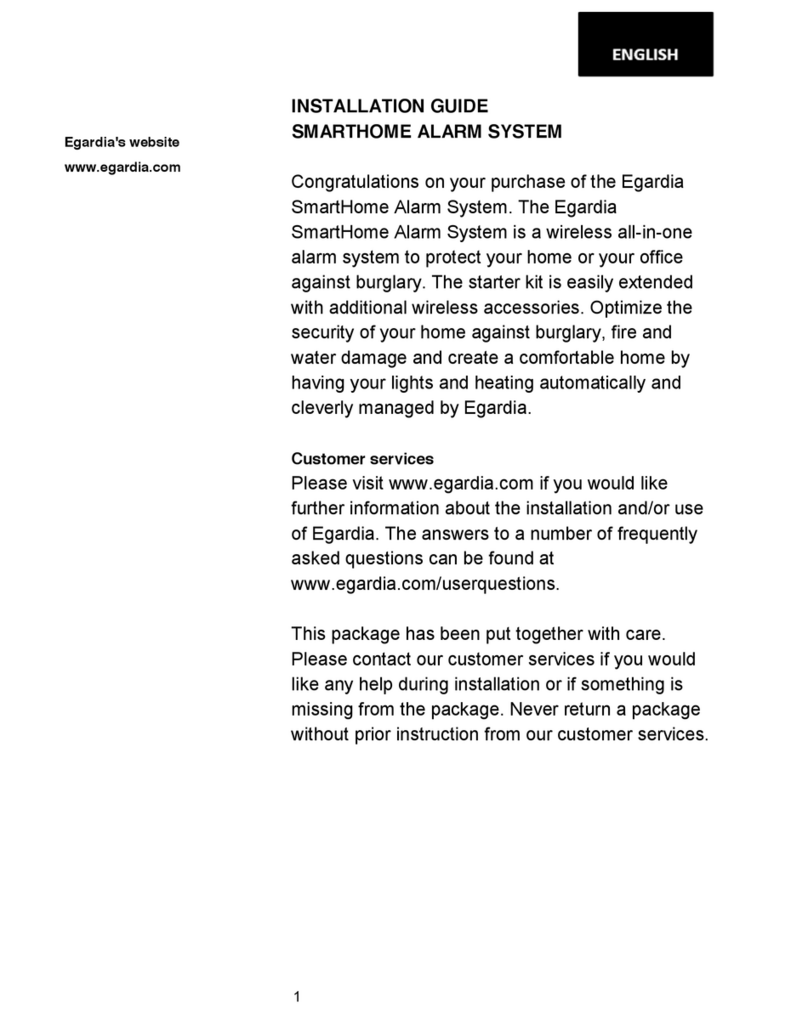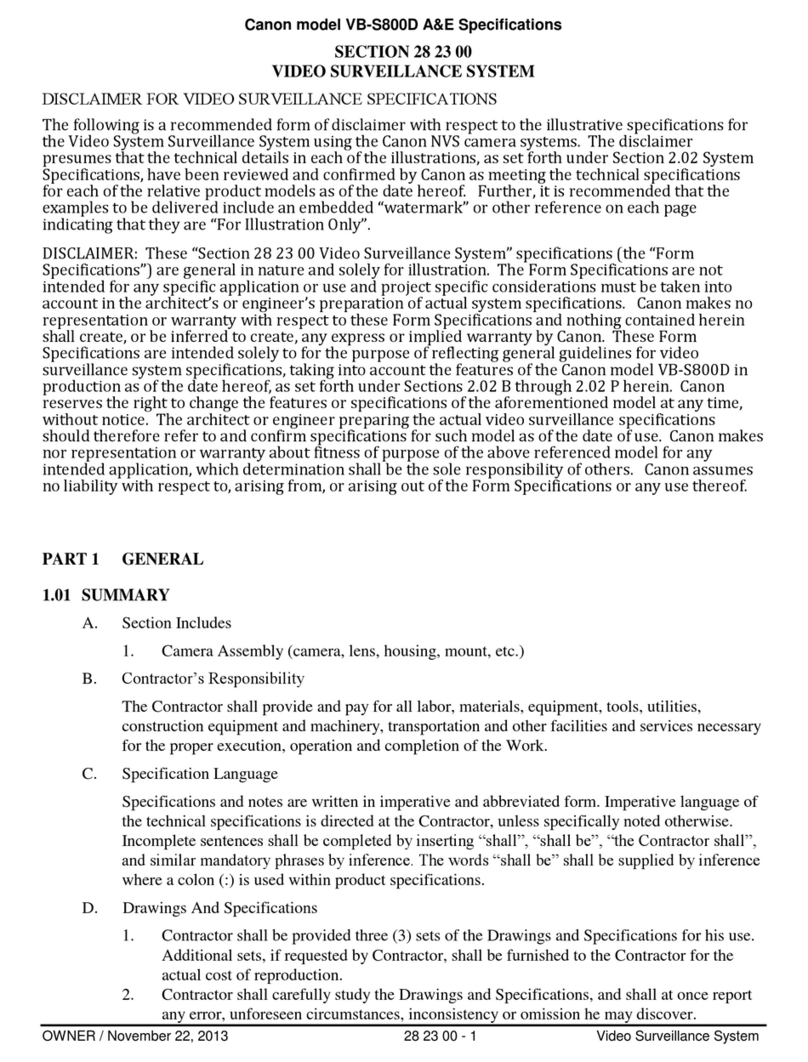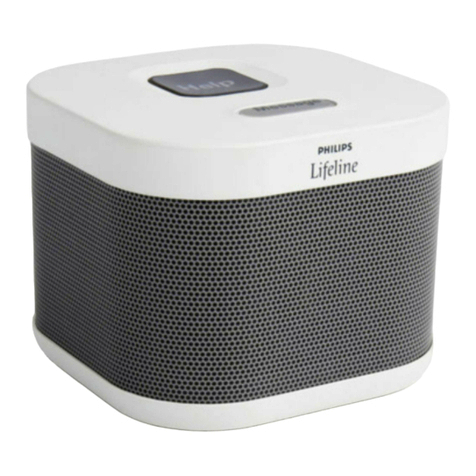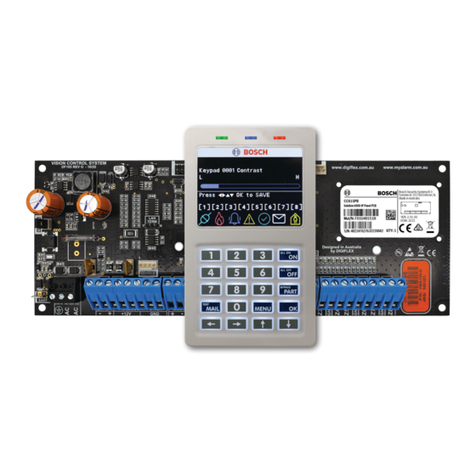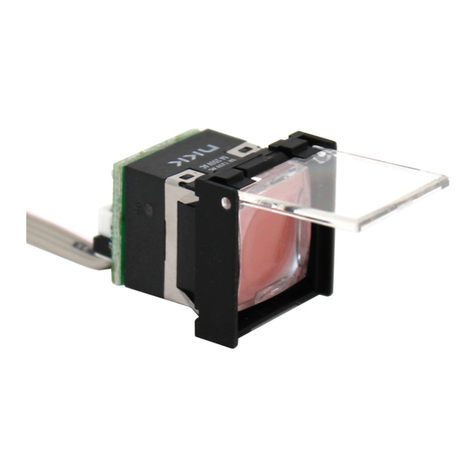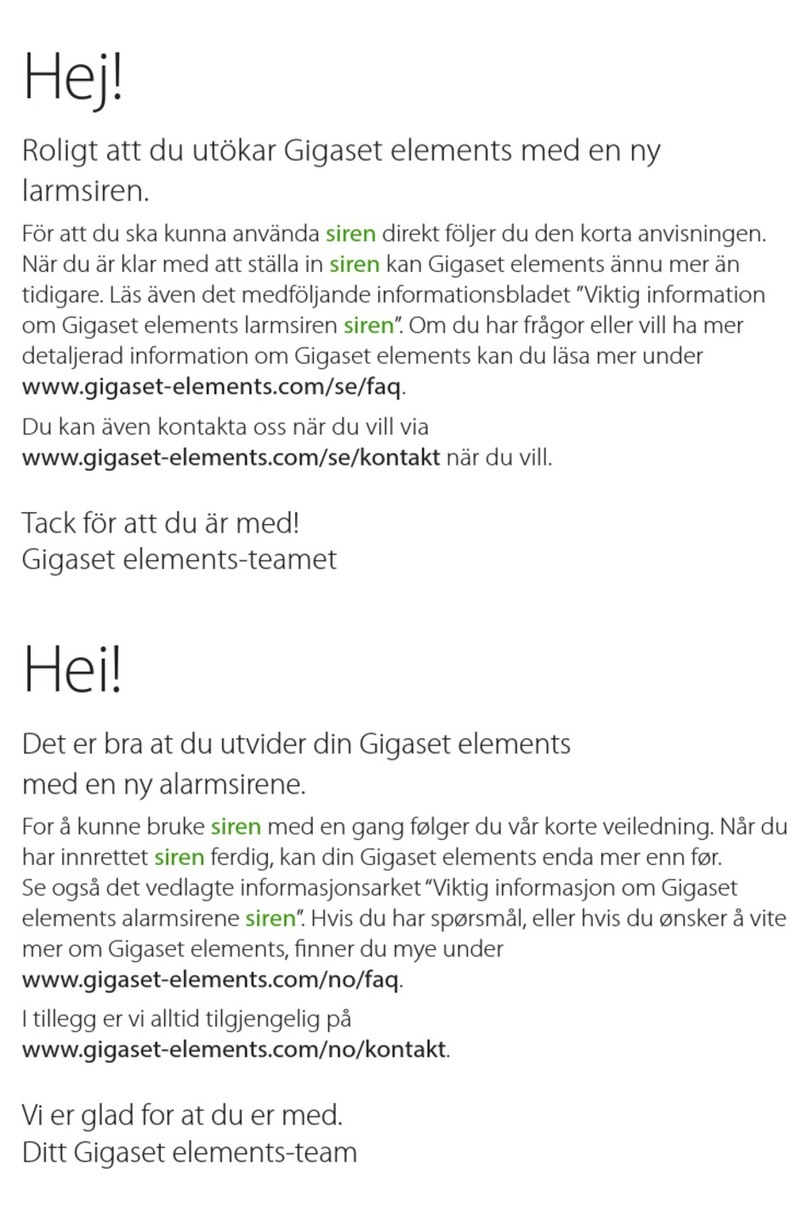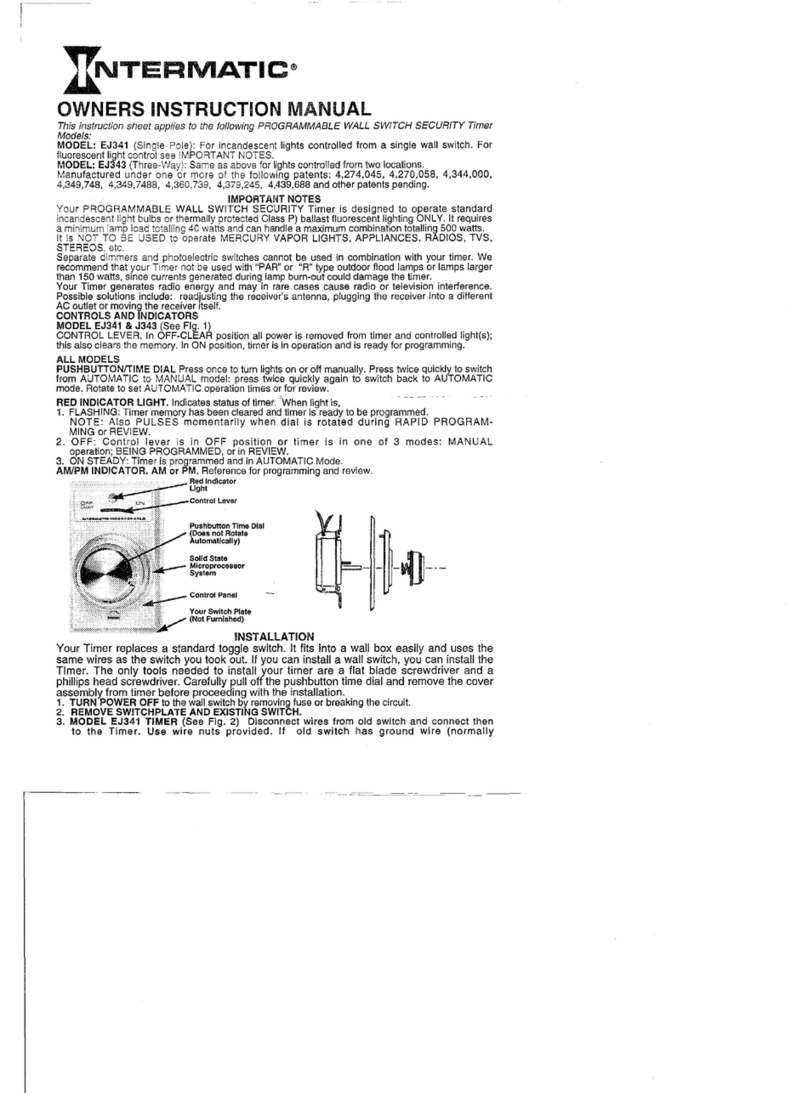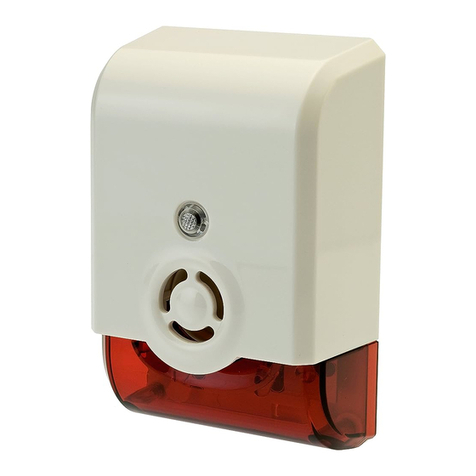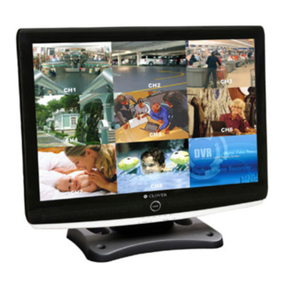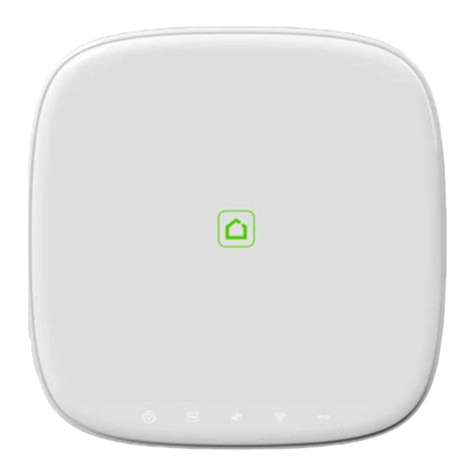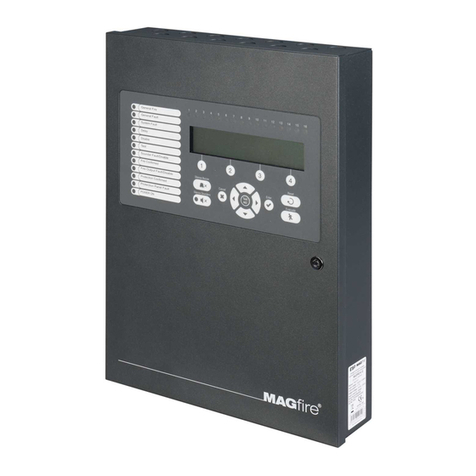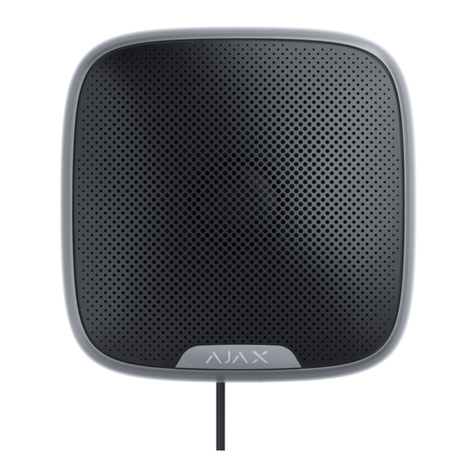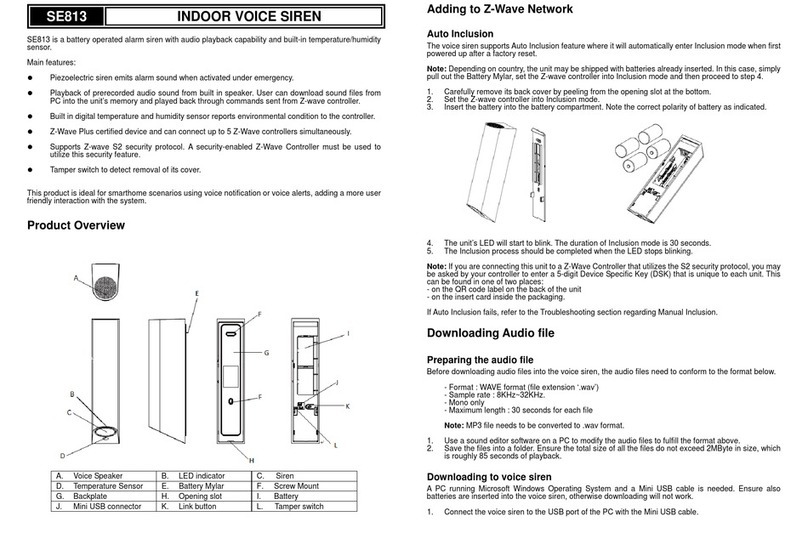
RF1100E |Installation Instructions | 3.0 Setup
.
Bosch Security Systems | 6/04 | 4998138687C 5
3.2 Testing
Test the RF1100E at least once each year. Test the
detector with the 13-332 Sound Sensor Tester.
Figure 6: 13-332 Sound Sensor Tester
1
ACTIVATE TEST FLEX MAN
2 3 4
1 - 13-332
2 - Activate/Test switch
3 - Start button
4 - Flex/Man switch
3.2.1 Entering test mode
Place the RF1100E in Test Mode before you can test
the unit. In Test Mode, the RF1100E's LED disable
switch (Item 5 in Figure 5 on page 4) is overridden. You
can enter the Test Mode locally or remotely.
To enter the Test Mode locally:
1. Carefully open the service door of the RF1100E.
2. Insert a screwdriver into the slot next to the
sensitivity switches that contains the test pads.
3. Touch both test pads at the same time with the tip
of the screwdriver.
The green LED (Item 7 in Figure 8 on page 6) on the
RF1100E flashes once per second. If the green LED
does not flash, repeat Steps 2 and 3.
You can select the glass break sensitivity remotely from
a Bosch 13-332 Sound Sensor Tester to activate a test
mode.
The 13-332 Sound Sensor Tester
produces extremely loud sounds and can
be hazardous to hearing when used at
close range. Do not point the 13-332
towards someone’s head.
To enter the Test Mode remotely:
1. Stand within 3 m of the RF1100E.
2. Move the switches on top of the 13-332 tester to
ACTIVATE (Item 2 in Figure 6) and to MAN
(Item 4, Figure 6) modes.
3. Point the front of the tester towards the detector
and press the red Start button on top (refer to
Item 3 in Figure 6).
The tester buzzes and the green LED on the RF1100E
flashes once per second. If the green LED does not
flash, move closer to the detector and repeat the
procedure.
3.2.2 Testing the Detector (Flex and Audio
Signals)
1. Set the 13-332 tester switches to the TEST (Item 2
in Figure 6) and FLEX positions (Item 4 in Figure 6).
2. Press the red Start button (Item 3 in Figure 6). The
tester activates and starts an eight-second armed
period.
3. If window coverings are present, close them fully.
4. Hold the 13-332 tester near the point on the glass
farthest from the detector. If window coverings are
present, hold the tester between the glass and
window coverings.
5. Carefully strike the glass with a cushioned tool.
The 13-332 tester responds by producing a burst of
glass break audio.
If the RF1100E receives both the flex and audio signals
properly, its red Alarm LED lights for 3 sec.
If the red LED does not light, return to Step 2 in Section
3.0 Setup on page 4 to reposition the detector.
3.2.3 Exiting Test Mode
To exit the Test Mode locally:
1. Carefully open the service door of the RF1100E.
2. Insert a screwdriver into the slot next to the
sensitivity switches that contains the test pads.
3. Touch both test pads at the same time with the tip
of the screwdriver.
When the detector exits Test Mode, the green LED
(Item 7 in Figure 8) on the RF1100E stops flashing. If
the green LED continues to flash, repeat Steps 2 and 3.
To exit the Test Mode remotely:
1. Stand within 3 m of the detector.
2. Move the switches on top of the 13-332 tester to
ACTIVATE (Item 2 in Figure 6) and to MAN
(Item 4, Figure 6) modes.
3. Point the front of the tester towards the detector
and press the red Start button on top (Item 3 in
Figure 6).
4. The tester buzzes.








